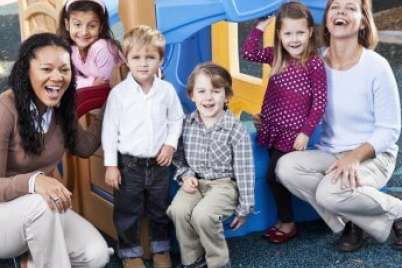
Creating positive sport experiences for kids with hidden disabilities
Believe it or not, it was easier to ski onto a ramp of ice and launch 15 metres in the air than try to keep my child in a local sports program.
At least in freestyle skiing aerials you have a chance to come out a hero on your feet, but as a parent of a child with “difficult behaviour” you’re almost guaranteed to be emotionally tossed and slammed, with your entire family along for the painful ride.
I’ve dedicated a good chunk of my life to developing quality sport for children and youth, and the hard truth is that few coaches and programs are prepared (or sometimes willing) to be “inclusive.” If you are the parent (and/or coach) of one of the 1.6 million kids who lack some of the cognitive, social, and emotional skills needed to succeed in school and sport, then you have very likely experienced some significant sport trauma.
Here are five doable strategies from my experience that may reduce the frequent lectures of how your kid is “not listening” and increase the odds of having a positive sport experience:
1. Research
Seek out programs that work for other kids with special needs through your parent network. (You need one!) Inclusive programs are usually led by patient, empathetic, and experienced coaches.
2. Communicate your child’s needs and triggers in advance
I have a standard one-page letter that I make sure any leader reads to learn what motivates my child and what triggers to avoid. I have learned to avoid any diagnostic language because that just plain scares people. If the coach is knowledgeable, then they will read through the lines! If you can meet with the coach beforehand, even better.
3. Create predictability
Managing change and the unknown can be extremely difficult for most kids with special needs. Review the plan for new activities at least a day prior. Also, routines reduce anxiety and make everything work better. One fun way to do this is to lay out all equipment the night before on the floor in the shape of a person.
4. Negotiate a “chill out” plan
My son’s gymnastics coach agreed that it was okay to snuggle into a padded circle and hang out when things got overwhelming so he could self-regulate.
5. Keep your expectations in check
Focus on participation as the priority. Advise the coach to follow your child’s pace and level of learning, and once routine and trust is built, the athletic skills will follow!
A final note
Even though we have had little success with programs whose culture makes it okay to exclude kids with diverse challenges, my son has had some incredibly committed coaches that have helped him develop socially and physically. The good news is every day more schools and sport clubs are working to be inclusive in their recreational and competitive programs!
About the author: Meredith Gardner is a former world champion freestyle skiing aerialist, long-term athlete development (LTAD) expert, and activist for inclusion in sport. Meredith led the “Count Me In” project to train coaches on effective inclusion strategies in sport.





